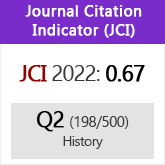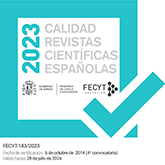Peronismo y oposición política en el parlamento argentino. La dimensión del conflicto con la unión cívica radical (1946-1951)
DOI:
https://doi.org/10.3989/revindias.2001.i221.482Keywords:
Argentina, political parties, Radical Civic Union, peronismAbstract
The outcome of the 1946 polls which resulted in Perón’s election delimited fields of action and strategies by the opposing parties. This article analyzes the Congress as centre of politicalinstitutional conflict between Government and Opposition. It mainly studies the initiatives of the UCR (Unión Cívica Radical) which had the widest representation at Congress. Special attention is given to the way in which determined currents within Radicalism took advantage of their parliamentary oppositional work to define conducts, leaders and ideas struggling to become hegemonic within the party. The Parliament did not remain the same along the presidential period, which leads to the analysis of the changes in representation of the UCR congressmen and the relationship between the executive and legislative powers.
Downloads
Download data is not yet available.
Downloads
Published
2001-04-30
How to Cite
García Sebastiani, M. (2001). Peronismo y oposición política en el parlamento argentino. La dimensión del conflicto con la unión cívica radical (1946-1951). Revista De Indias, 61(221), 27–66. https://doi.org/10.3989/revindias.2001.i221.482
Issue
Section
Articles
License
Copyright (c) 2001 Consejo Superior de Investigaciones Científicas (CSIC)

This work is licensed under a Creative Commons Attribution 4.0 International License.
© CSIC. Manuscripts published in both the printed and online versions of this Journal are the property of Consejo Superior de Investigaciones Científicas, and quoting this source is a requirement for any partial or full reproduction.All contents of this electronic edition, except where otherwise noted, are distributed under a “Creative Commons Attribution 4.0 International” (CC BY 4.0) License. You may read here the basic information and the legal text of the license. The indication of the CC BY 4.0 License must be expressly stated in this way when necessary.
Self-archiving in repositories, personal webpages or similar, of any version other than the published by the Editor, is not allowed.














